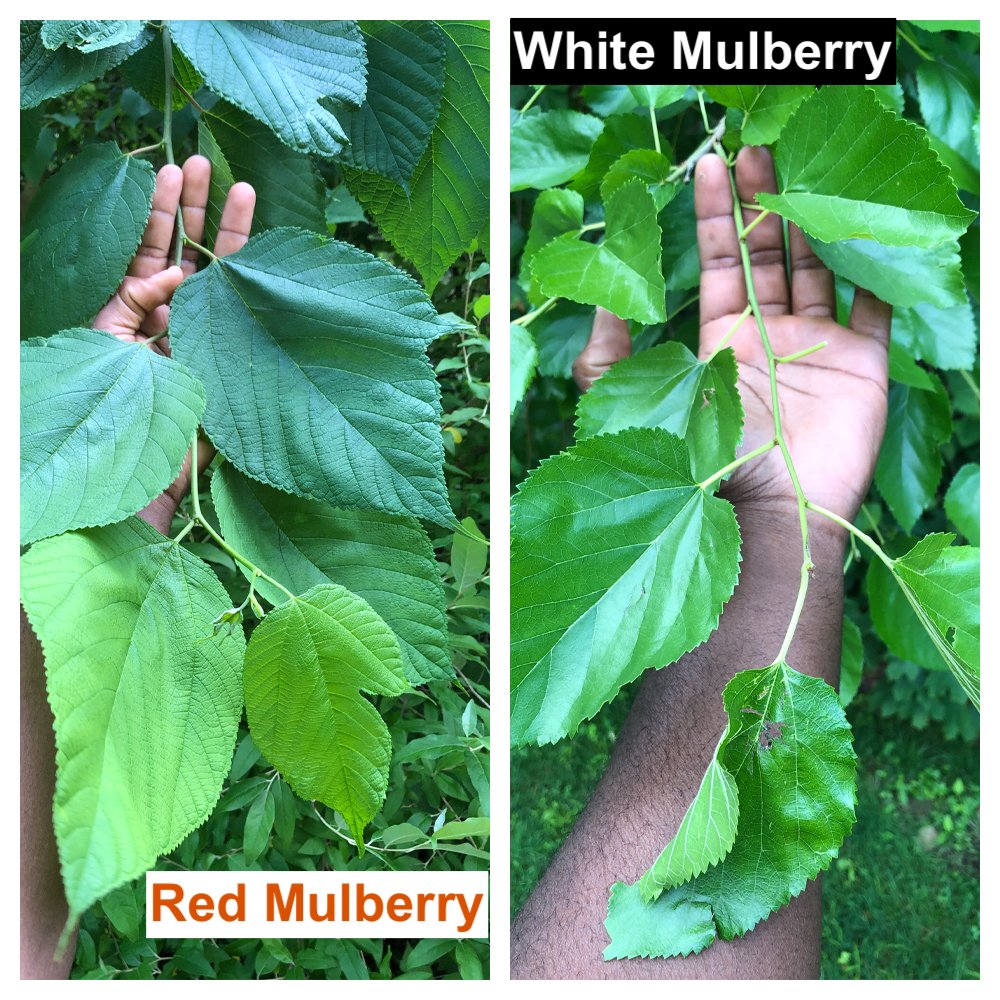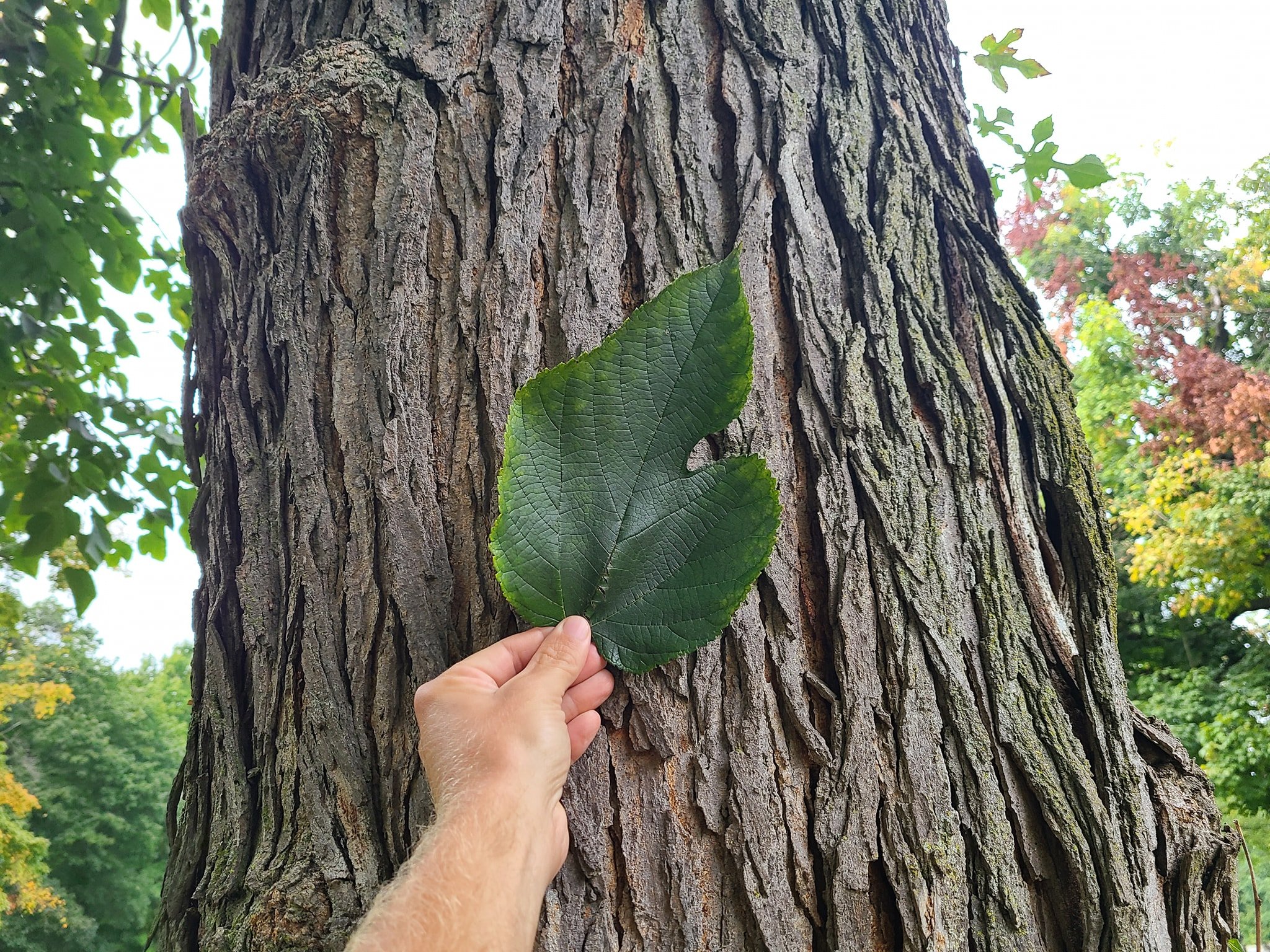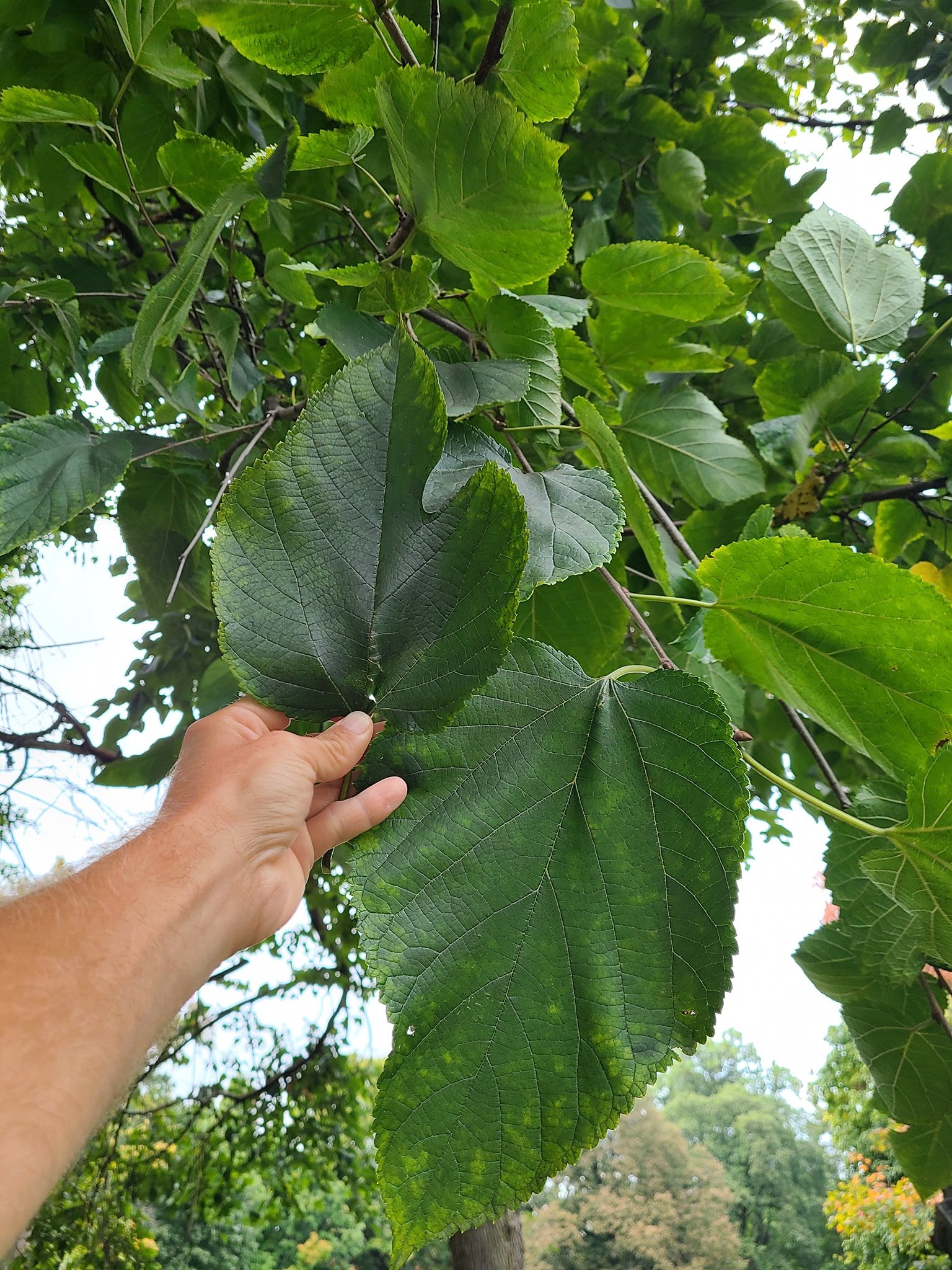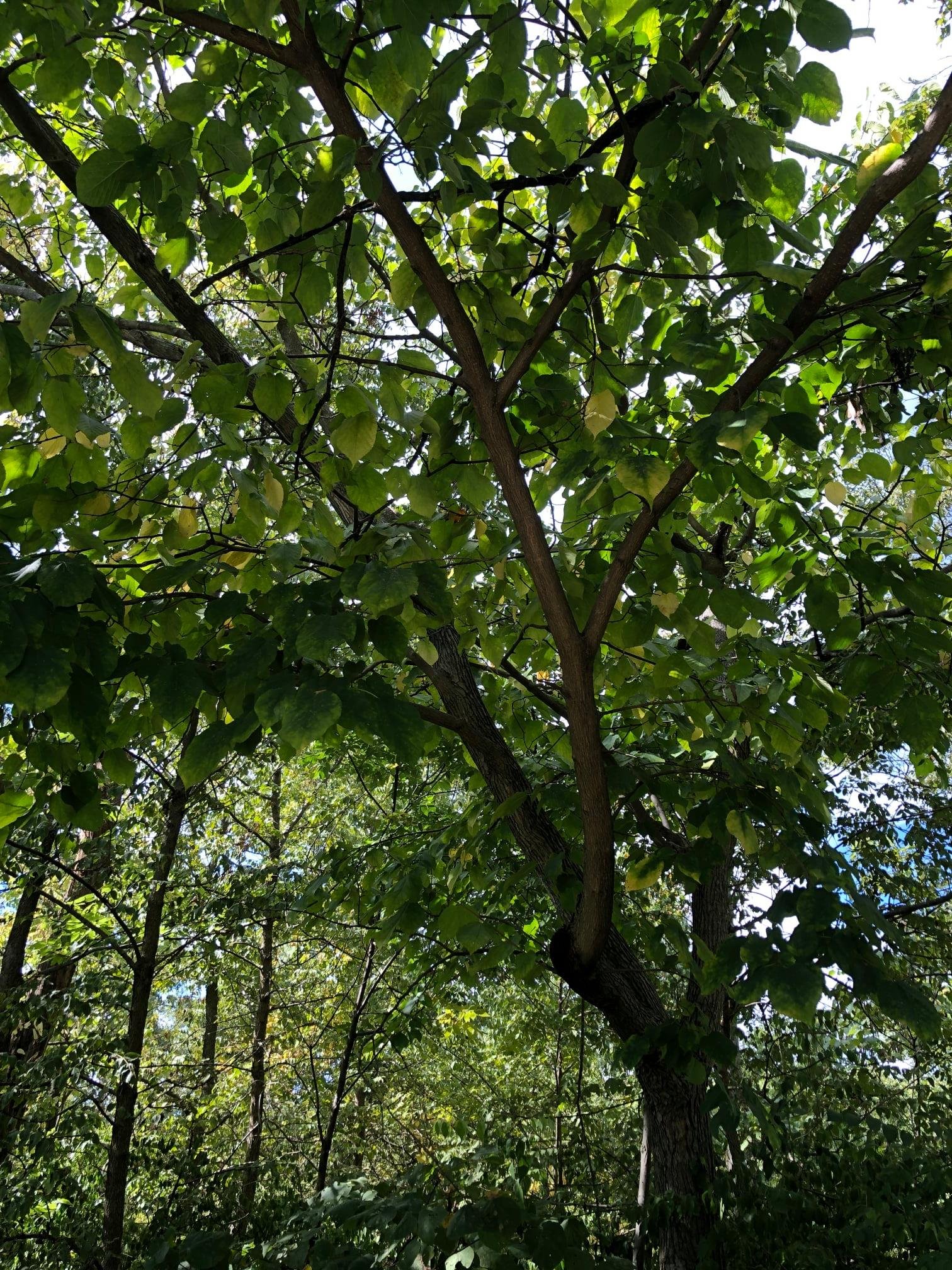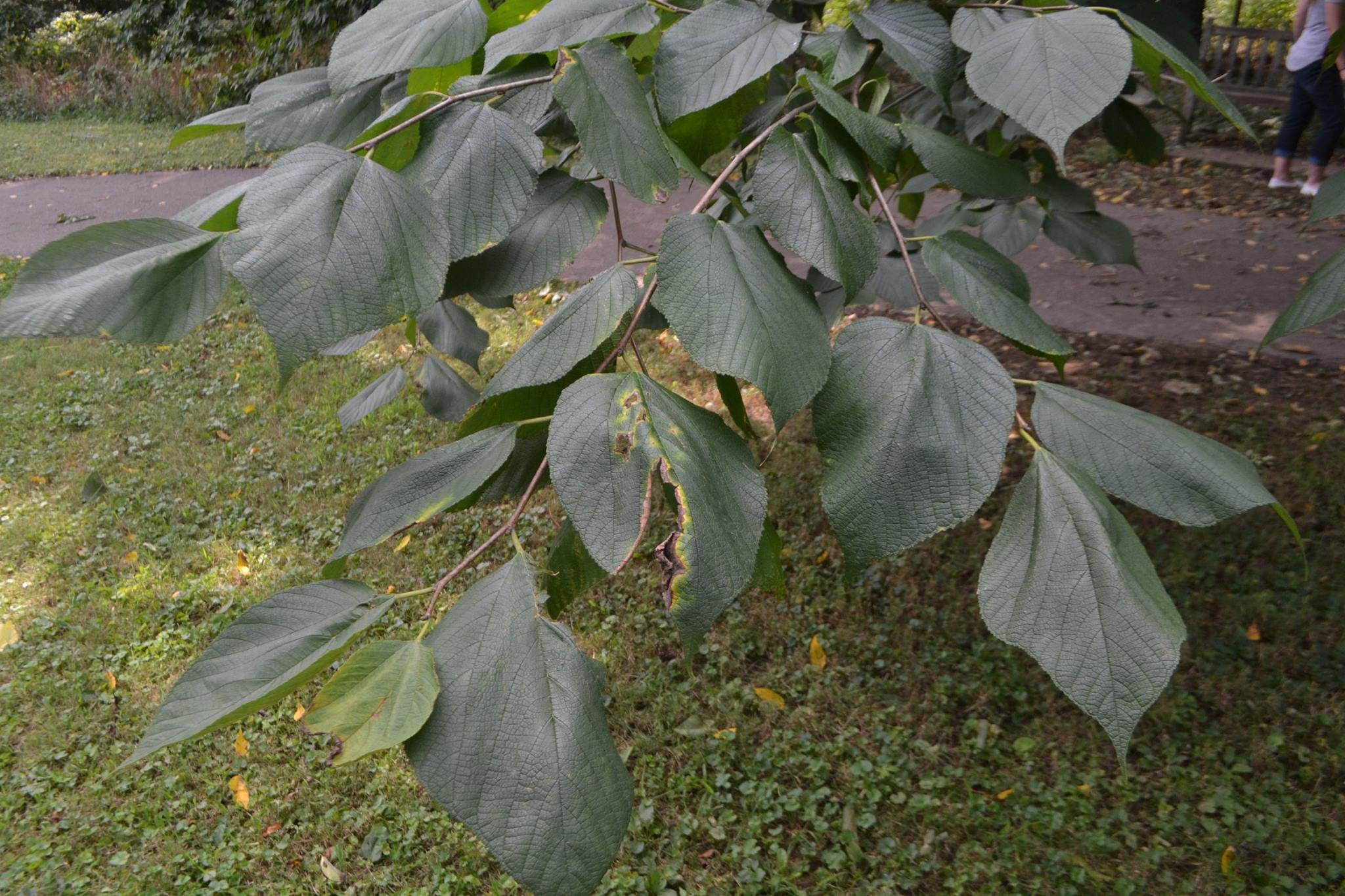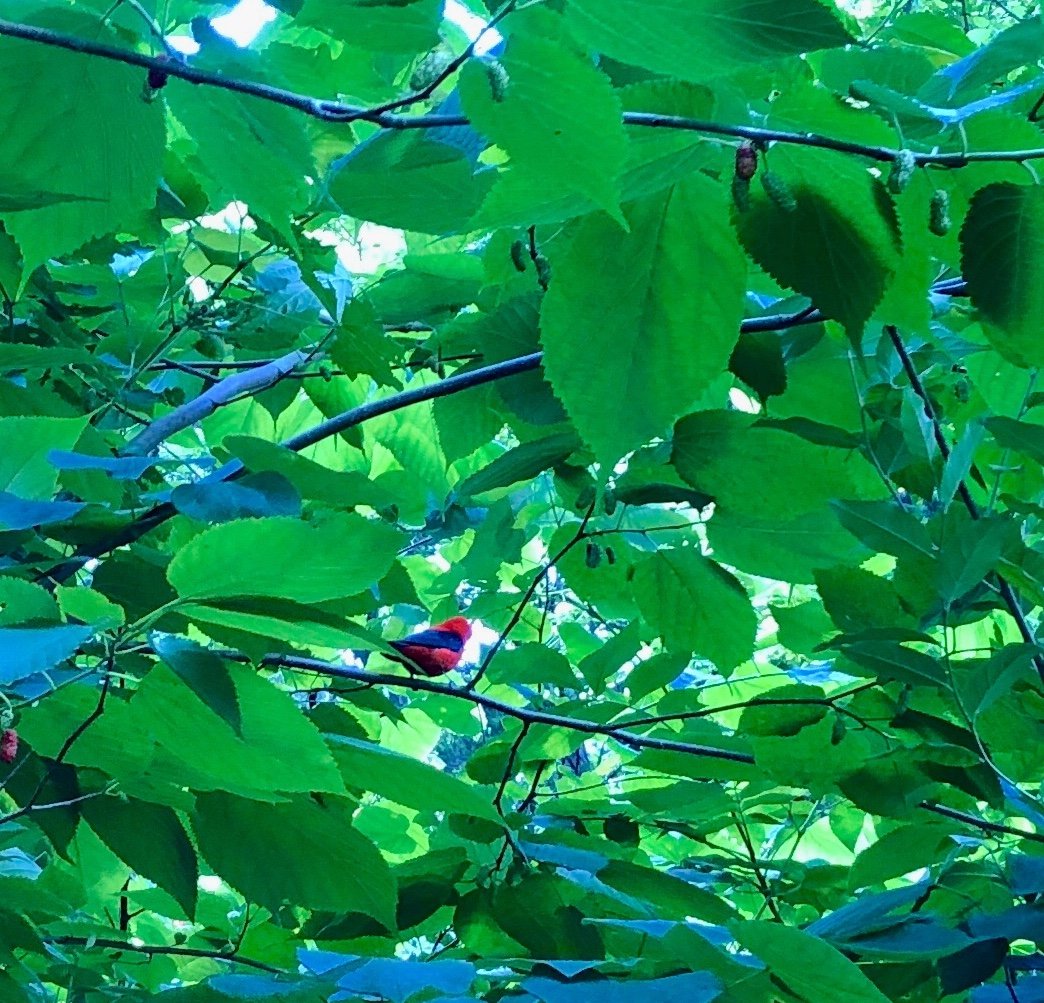Disclaimer: This article is not about saving the absolutely weedy invasive plant known as White Mulberry (Morus alba). The native Red Mulberry is much less aggressive, and does not invade the landscape or ecosystem.
Red Mulberry (Morus rubra) is one of the most widely documented native plants which would make one think it’s one of the most common native plants. In actuality many of the documentations are likely the invasive White Mulberry (Morus alba) introduced in the 1800’s. White Mulberry epicenters are nearly always at metropolitans where the invasive trees were established first for the Mulberry silkworm hosts for the production of silk fiber. White Mulberry, which has a red fruit like Red Mulberry, now pervades various landscapes and environments throughout the U.S. Red Mulberry is much less common, and may suffer from hybridization where climate promotes the flowering of each species overlapping. In the Midwest and Uppersouth White Mulberry blooms weeks before Red Mulberry which lowers the frequency of hybridization. The same case may repeat in other regions. The easiest way to tell the difference between Red Mulberry and White Mulberry is the leaves. Red Mulberry leaves are not reflective or glossy and they are rough to the touch whereas White Mulberry are glossy, more glabrous and smoother to the touch.
CLICK IMAGES BELOW TO EXPAND THEM.
Select/click the images above to expand them then click/tap to advance to the next picture. Also, Turn your cellphone side ways for horizontal pictures, and straight up and down for vertical pictures.
The first 4 photos in the above gallery are from Horticulturist Jimmy Strathmann in Indiana.
In neighborhoods Red Mulberry has many opportunities to fit into the landscape as a medium sized tree popular with wildlife and humans because of its berry production. Due to its smaller size, it’s even safe to plant Red Mulberry on the West and East sides of houses to cool down the walls. Its limbs will rarely get to the size and height needed to become a threat to falling on a roof. In Native Plant Agriculture Red Mulberry is both a fruit crop and a leaf crop. They can be coppiced to control height, and be used as a perennial leaf crop in native agricultural systems. The large edible leaves are best cooked if they’re to be eaten in higher quantities, and they lend themselves to wrapping other foods inside of them. Red Mulberry is a PH Generalist able to grow in acidic soils as well as alkaline soils though it is more dominant in acidic soils. The fruit ripening overlaps with the time that Serviceberries are ripening so if you’re trying to create less competition for serviceberry fruits - planting clusters of Red Mulberry will help spread the competition out. Plant at least in groups of 3, 4 or 5 so as to heighten the chance that you’ll plant at least 1 female and 1 male tree as males do not create fruit. Recommended as a house cooling tree. Applicable to all hillside aspects in the northern portion of its range; N,E,W, and S if the soil is deep - or flatter ground. Applicable to NE, N, NW, and E in the southern portion of its range - or flatter ground. Height is 30’ to 45’ typically, but up to 55’. Wind Pollinated.
CLICK IMAGES BELOW TO EXPAND THEM.
Select/click the images above to expand them then click/tap to advance to the next picture. Also, Turn your cellphone side ways for horizontal pictures, and straight up and down for vertical pictures.
Saving Red Mulbberries
In our ecosystems, Red Mulberry is being replaced by invasive White Mulberries (Morus alba). In urban forests, White Mulberry outnumbers Red Mulberry 1 to 1,000 in most cities and suburbs. Where we find the true Red Mulberry is within large suburban or rural county and state parks, or nature preserves on wood edges and large forest canopy openings. Gaining Permission from these entities is ideal for collecting fruit to propagate and repopulate Red Mulberry. Once you’ve found Red Mulberry, observe it’s bloom period, which should be after White Mulberry. If in your region it blooms weeks after White Mulberry, they’re more likely to be unhybridized. In our experience, we’ve only seen 1 single tree that looked to show hybrid expressions of Red Mulberry and White Mulberry so it is likely less common than reported. Whether you’re most interested in the edible fruit and leaves for human food production or you’re interested in preserving pure Red Mulberry and supporting wildlife - propagating this tree is a worthy project. When planting Red Mulberry, do your best to removal all nearby White Mulberry - even if they’re in your neighbors yard at least attempt to get permission to remove. You can also girdle them and apply an herbicide to the girdle ring if it isn’t in danger of falling on structures. Review the following propagation guide when you’ve found a fruiting Red Mulberry.
Propagation Tips: Collect fruit around the same time as serviceberry ripens in early summer. Crush fruit in hand, and allow the pulp to decompose within sand or a soil medium over the summer and fall outdoors within a container with drainage. Continue winter stratification in that container before sowing the seeds with the sand or soil medium in the spring compressed onto the surface. With proper pot size (.5 gallon or 1 gallon) and fertilizer they should reach at least 4 feet as first year saplings.
We’ll be shipping hundreds of pure Red Mulberries from our Native Plant Nursery in 2023. Sign up for our email list below to be notified.
THE PRODUCTION OF THESE ARTICLES IS SUSTAINED PURELY BY OUR BOOK SALES. IF YOU’D LIKE TO SUPPORT US, CONSIDER ONE OF OUR BOOKS BELOW.
Receive 40% off of our Native Plant Propagation Guide/Nursery Model book when purchased as a package. deal with either our Native Meadowscaping book or our Native Plant Agriculture book at this link.
Learn about what our Native Meadowscaping book has to offer here at this link.
Learn about what our Native Plant Agriculture Vol. 1 book has to offer here at this link.
Learn about what our Native Plant Propagation Guide & Nursery Model has to offer here at this link.


